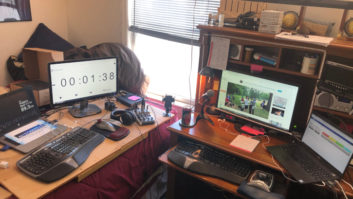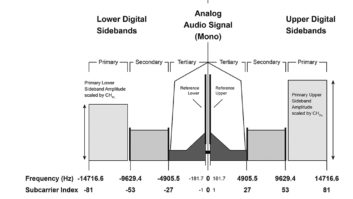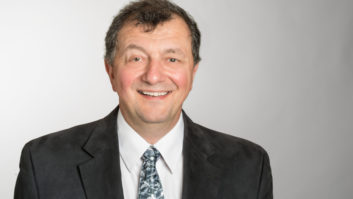
credit: iStockphoto/AnsonLu Critical shifts in business are on the minds of Daniel Anstandig, CEO of Listener Driven Radio, and Jon Erdahl, president of 3D Media Ventures. The duo will talk about such disruptive changes at a broadcast management session of the spring NAB Show.
Anstandig says he and Erdahl speak together at industry events to address the topic of “adaptive” leadership at a time when every industry seems to be undergoing being disruption. At a time when U.S. commercial radio is growing only slowly, they say, some small and mid-sized broadcast companies have achieved double-digit growth by thinking creatively.
One critical shift in the radio industry is the way the “spot economy” has changed. Erdahl says that as broadcasters, “We don’t own accounts anymore.” Or as Anstandig put it, salespeople “may identify an account as a radio spender” and chase only those accounts. “We think that’s a mistake.”
Anstandig and Erdahl believe radio has to start looking outside the confines of the traditional broadcast market to the broader media world, especially online, and towards a multi-platform approach. New, non-traditional digital revenue can in fact be had, he said, citing examples of clients who are working with major brands that sponsor interactive live programming.
THINK MORE BROADLY
Strong leaders also understand that competition is no longer just with other radio broadcasters; yet Anstandig says insularity remains an overarching challenge for radio.

Daniel Anstandig

Jon Erdahl Many radio companies look at other competing groups and see growth potential, so they set about to steal audience. Instead, he said, they should look outside the lines of broadcast.
“We look at the competition not just as broadcast stations, but services like Pandora, Spotify and Grooveshark — services that take time spent away from radio that aren’t necessarily tracked in ratings, that earn revenue that aren’t necessarily tracked in revenue reports.”
Erdahl says it’s “the guys in the garage, inventing the next thing, that we have to look out for.” CEOs are “scrambling so much as mini-CFOs,” he observes, so they’re not taking stock of what’s going on. They only see what’s in front of them, and react, resulting in “random acts of engineering” rather than innovation.
Anstandig emphasizes the importance of managers acting like entrepreneurs, seeing potential, moving in a problem-solving and real-time management mentality.
“There’s a big difference between knee-jerk and real-time adaptability,” he said. Programmers think they have a feedback loop with listener testing, “but there’s several weeks or months between when you talk to the audience and when you make an adaptation.” His company helps involve the audience in real time because Anstandig believes broadcasters need systems to absorb input from their real customers constantly. Managers, he says, can become separated from that feedback loop.
“Live on-air programming can be adaptive in real time,” Anstandig argues. “Listener Driven Radio puts the audience in control of real-time music decisions,” though programmers still set the playlist that listeners choose from.
Cox Media’s 97x, WUSN (FM), in Tampa, Fla., relaunched and rebranded in January using technology provided by Listener Driven Radio, letting listeners program the entire daypart via a mobile app and the station’s website. Listeners can vote on songs from the station’s inventory to add to the playlist, or vote to move a song up or down in position. Within a week Anstandig says the station had 2.1 million votes from 300,000 unique voters.
FRESH PERSPECTIVES
Critical shifts are happening inside stations, too. The “elephant in the room,” Erdahl says, is that broadcasters need to stop recycling sales talent and recruit new. “Successful clients in mid-sized groups are going outside the norm, hiring account execs that aren’t broadcasters.”
“There are a host of recruiting sources that broadcasters aren’t even utilizing. If you have only a staff of three, then something is always going to suffer, and often that is strategy.” So, he advises, you need to find people who are very qualified, even if that requires looking outside of the business. “Where are you going to find the new pool of talent?”
Anstandig and Erdahl work primarily with CEOs of small and mid-size broadcast companies in mid-sized markets because, they say, that’s where the innovations are happening. “By working with the CEO first, it ensures that we have a strategy for growth working with the GMs … it has to start at the top,” Erdahl said.
He concludes that broadcasters should not simply “circle the wagons” nor “wait for the competitor across the street. Instead, as broadcasters, “We need to do it ourselves.”
The session “Ten Critical Business Shifts for Radio Broadcasters” takes place Tuesday April 9 at 10:30 a.m. in the Broadcast Management Conference.
Paul Riismandel is a veteran of community and college radio. He is co-founder and technology editor of RadioSurvivor.com.











